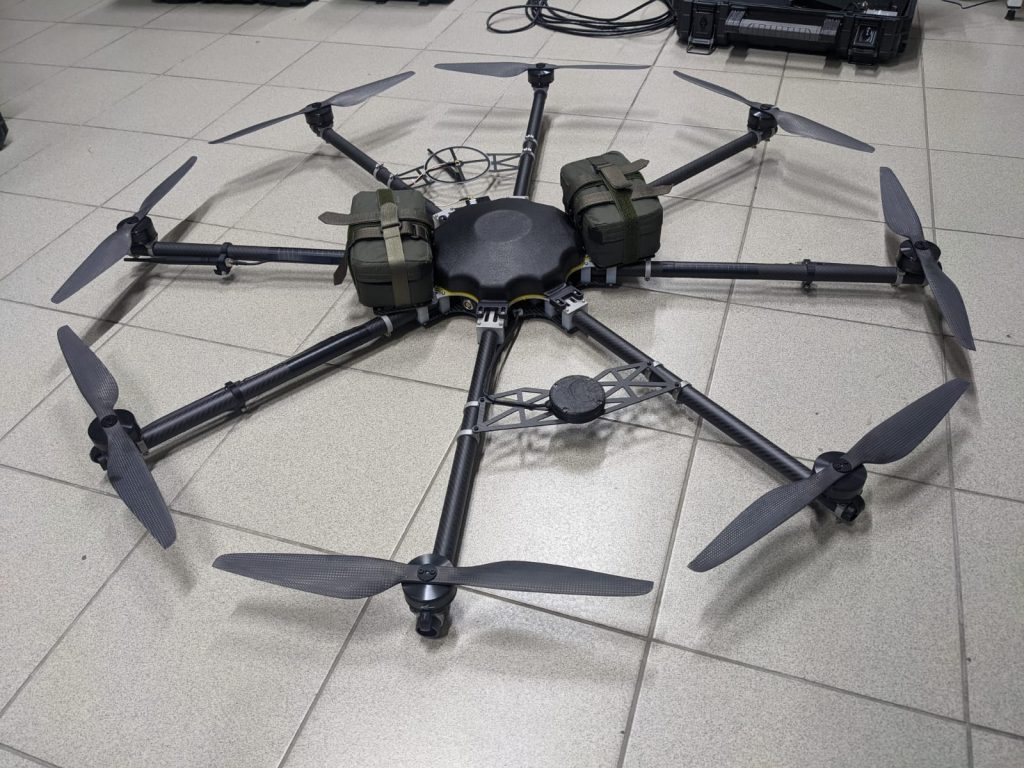- Aerorozvidka is an elite Ukrainian drone unit founded by volunteer IT experts.
- The unit custom-builds or modifies off-the-shelf consumer drones to bomb Russian tanks and armor.
- The unit is a key part of the Ukrainian resistance against invading Russian forces.
An elite Ukrainian drone unit founded by volunteer IT experts is becoming a crucial part of the resistance against invading Russian forces.
Aerorozvidka custom-builds or modifies off-the-shelf consumer drones to work in a military context and drop bombs on Russian vehicles under the cover of night.
"Now, we are all soldiers, but our roots are very different," Mykhailo, a board member and head of communications for Aerorozvidka, told Insider.
"Some of us have PhDs. Some have masters. Some are from the IT industry and many other industries. The main thing which unites us is a desire to win this war."
The unit was founded in 2014 in response to Russia's annexation of Crimea and Russian-backed groups launching a separatist insurgency in the Donbas region.
Tech-savvy volunteers came together to design machines for drone-based aerial reconnaissance to support the Ukrainian army.
Aerorozvidka's founder, an investment banker, and father of four, Volodymyr Kochetkov-Sukach, was killed in action in Donbas in 2015.
"The invasion began not months ago. It began in 2014," Mykhailo said.
Aerorozvidka now operates as a non-governmental organization that closely supports Ukraine's military.
The unit uses a range of drones, many of which are commonly available store-bought drones that they modify and militarize, including Chinese DJI drones and Autel drones, French Parrot drones, and more.
Its most prized drone is the octocopter R-18, which they build from scratch. It has a range of 4km, a 40 minute flight time, and can drop 5kg bombs.

Each R-18 costs $20,000 to build, making them much cheaper than anti-tank missiles such as NLAWs, or New generation Light Anti-tank Weapons, costing $40,000 per unit.
Unlike NLAWs, which are single-use, the R-18s can also be used repeatedly– unless they suffer damage by Russian fire.
The team has drones flying 20 hours of the day on reconnaissance or combat missions, Mykhailo said.
Aerorozvidka is divided into the drone team, the Delta team, and a cybersecurity team.
Delta is a NATO-supported web-based situation awareness system that creates a map of Russian targets using information from various sources, including agents on land and reconnaissance data from the drone team.
The unit also uses Elon Musk's Starlink satellite system, which helps ensure connectivity even if there are internet or power outages.

The unit carries out around 300 reconnaissance missions daily and has destroyed "dozens, possibly hundreds" of Russian vehicles, Mykhailo said.
Aerorozvidka typically carries out missions under cover of night because their drones' thermal imaging cameras give them an advantage. Equipped with night-vision goggles and sniper rifles, the drone soldiers would use quad bikes to move stealthily through the forests and get in position to attack the Russian forces.
Its most significant victory was helping to halt the 40-mile Russian convoy heading to attack the capital Kyiv.
' I think it's logical to say they are adapting. But they are still Russians'
The unit typically targets the most valuable vehicle in a convoy to make the most effective use of their limited bombs.
In this case, the team targeted vehicles at the head of the convoy, which succeeded in blocking the convoy and demoralizing Russian forces.
Currently, Aerorozvidka primarily operates in the Kyiv region but is expanding operations across Ukraine, with an anticipated renewed Russian offensive in the east and south of the country.
Mykhailo said that he could not disclose exactly how many people are part of the organization, but that there are "dozens."
The unit often shares videos of their missions on social media, occasionally set to the backdrop of music by Ukrainian rap artist Skofka.
—🇺🇦 Ukraine Weapons Tracker (@UAWeapons) March 30, 2022
A significant challenge facing Aerorozvidka is funding and supply issues. It relies upon crowdfunding and donations to get hold of much-needed components such as advanced modems and thermal imaging cameras.
Many US and Canada-made parts are subject to export controls prohibiting them from being sent to Ukraine.
Russian forces are slowly adapting and working out how to shoot down Aerorozvidka's drones, making the need for extra parts and funding crucial.
Despite the increase in counter-attacks, Aerorozvidka is confident that the unit will have continued success tormenting the Russian invaders.
"I think it's logical to say they are adapting. But they are still Russians," Mykhailo said.
